
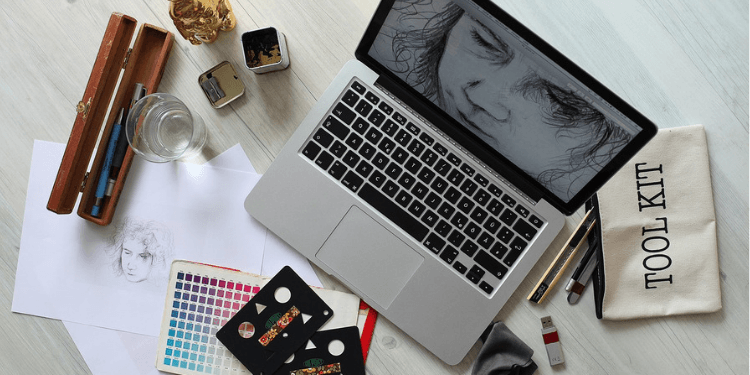
Quick Links
Quick Links
What would you say if I told you that you could outsource graphic design without all the headache involved in either outsourcing or finding the right graphic designer?
You probably wouldn’t believe the half of it. It can’t possibly be that easy, anyway.
But that’s what this ultimate guide is all about. It’s the process that you, your mother in Florida, and the guy who lives down the road can use to outsource graphic design for specific needs.
Even if you try just one of these steps, it will bring you that much closer to a painless experience with remote hiring so you can successfully outsource graphic design.
(1) Outline Your Projects
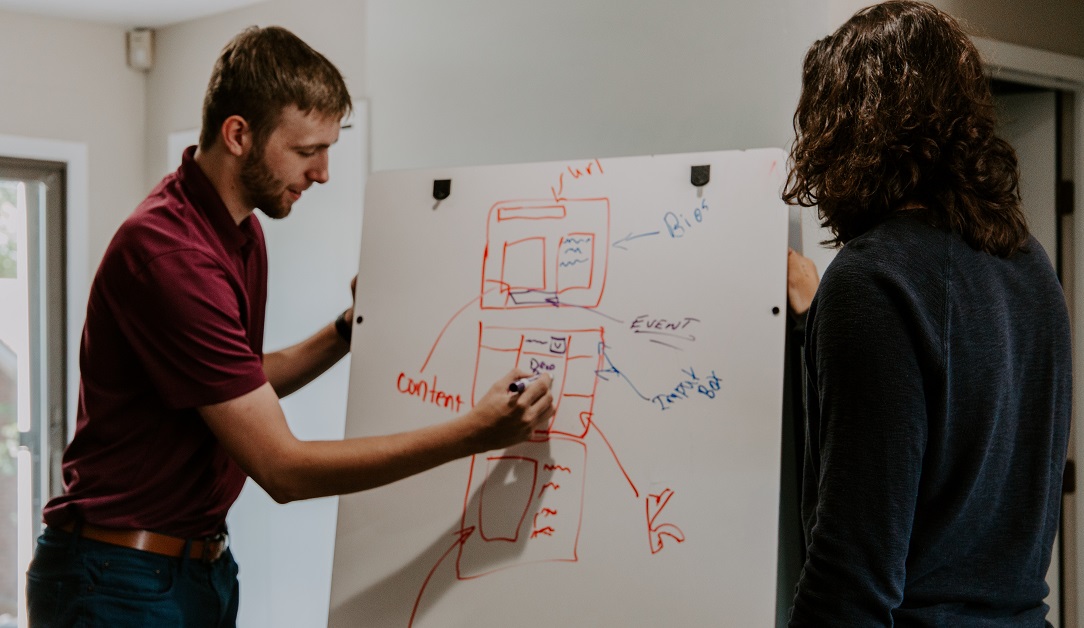
What do I need done?
You may have one or two design projects tumbling around in your head right now. But you should really sit down and think hard about not just these pressing items, but all of the graphic design elements that your business needs.
Making a great hire isn’t just about getting the urgent stuff off your plate. You need to think systematically and get all your ducks in a row so you can set up a system that’s going to work for your business – not just to get one project done today, but to prepare to have every project go smoothly from this point forward.
Be Purposeful
Brainstorm 10-20 graphic design projects you need done for your business. Think through all the different moving parts that build up a great business. From engagement and marketing to labeling and packaging, write down the different pieces of collateral that you’re going to need to have available to you throughout the growth process.
Once you have that organized, you can outsource graphic design with a solid plan for what you want the end result to be. Otherwise, you’ll be floundering at some point – and possibly at every point – not knowing what you really want or need, or what’s going to work for you.
And you’ll probably end up putting the blame on the designers you hire – one after another – who were of course really just following your lead, since you are the business owner, the brand creator. Know what you want so you can get it.
(2) Plan Out Your Branding
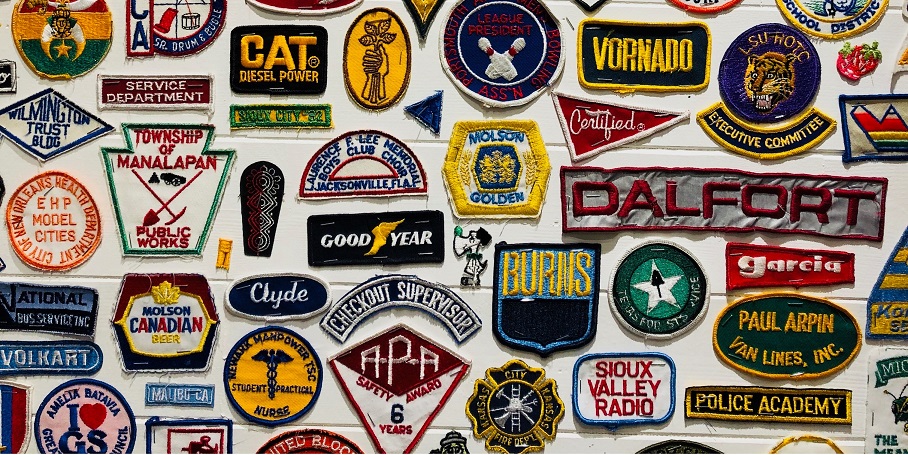
What does my brand communicate?
Before you outsource graphic design of any kind, you must have a brand standpoint to work from. You might already have a vision statement, so you can start from there. Think about who you are as a company and what you want to achieve. Then think about how you can communicate your brand to your target market in a way that brings you closer to your business goals.
You’ll need a bunch of brand collateral, but this won’t come together nicely at all if you don’t have a good foundation to build it off of. It all starts with your logo, the basic symbol that will represent your brand all throughout the lifespan of your business. You must choose wisely.
Your Elements
First, think about the colors that best represent your company. Remember that colors evoke feelings, so don’t just pick a color that you personally like. If you’re really passionate about your brand, then there will likely be some connection between what you like and what it means. But be sure that you are focusing on what the colors evoke in your targets rather than how you personally feel about them. Do some research about the psychology of color in different cultures. This will guide you as you plan your brand’s visual identity.
Next, think about the shapes that best represent your brand. They can be anything from the most basic shapes to existing symbols or even as far as a specific character. Like colors, shapes also encourage certain feelings in people, and they can be very different depending on which culture you are selling to, so be careful to look into their meanings – both standing alone and in combination with other shapes and, of course, colors.
For instance, you can use geometric shapes to express stability and symmetry, which can make you look more professional. Note, however, that they can also make you seem too rigid if used too forcefully. You can also use an easily recognizable organic shape like a dog or a tree to communicate the innate harmony that it already possesses. This will make a connection between your brand and the emotion evoked by the thing that the shape represents.
Your Palette

Combine your chosen colors and shapes and review the overall meaning that they express. From there, you can firm up the specific palette that you will work with as you start planning out your materials more specifically. This way, when you outsource graphic design, you’ll be able to communicate a defined structure that will guide all your projects moving forward.
Professional designers can help you brainstorm good ideas, but they can’t decide on what your brand should be about. Don’t overburden them with the unrealistic expectation of being able to create not just designs – which is what you are hiring them for – but your entire branding scheme… plus the actual designs.
(3) Don’t Reinvent the Wheel
What are the different designs I need?
There are a lot of existing designs out there that combine a myriad of different elements to evoke a complex combination of reactions. There’s no need for you to start from scratch when it’s time to sit down and plan out what you want in a website, brochure, social media post, business card, etc.
Samples
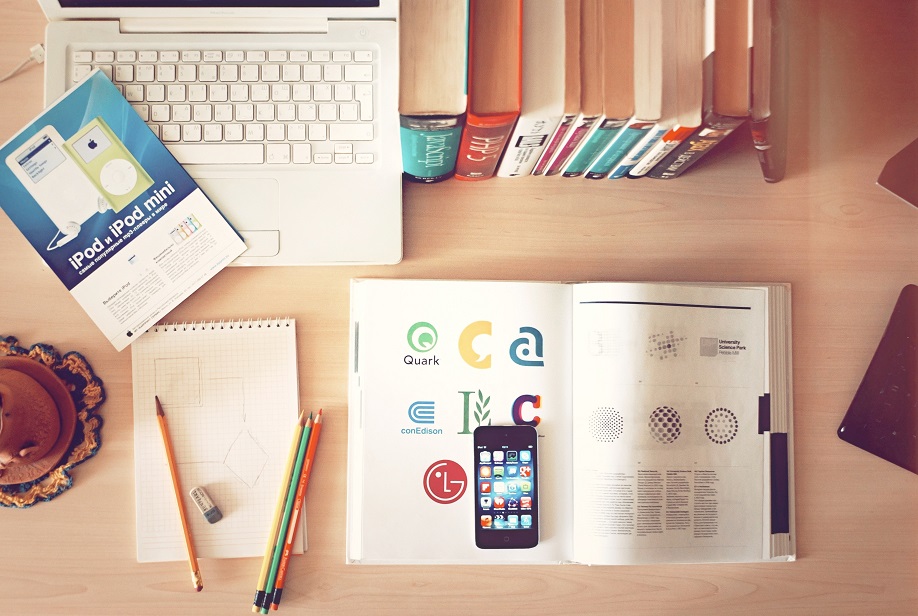
Get online and look at the different materials that other companies have out there. Take samples of the designs that you think would work for your business. Remember to keep your colors and shapes in mind and choose based off what works with that palette, not what you personally find attractive. Your goal here is not to feel good about your designs, but to prepare materials that will be attractive and meaningful to your target customer.
Gather at least three samples for each piece of collateral in every project that you outlined above. Then create a dream board that shows what the elements mean, a.k.a what you want them to express so your customers are mentally and emotionally engaged, and guided to a target action.
(4) Set a Budget

How much can I afford to spend?
The planning stage is over and you have all you need to get to the actual design work. There’s a lot to get done, but your business can only endure a certain level of expense.
Even if it’s for marketing that will grow your business, you need to set a reasonable monthly budget that won’t dig a huge hole that you won’t be able to get out of. This initial, raw budget can be flexible depending on the potential of your projects and your target results. Just be prudent about it, and always remember that there is a tomorrow – or next month in this case.
Cost
With your budget in mind, look at the going rates for graphic design work around the world. This will give you an idea of how much it costs to outsource graphic design in general. Go to a variety of sources from professional branding agencies to online marketplaces to get an idea of cost versus image.
Remember, they’ve got branding too, and this can be a bigger factor in pricing than the actual quality of the work. If you’re looking at freelancers, know that their portfolios and reviews are both proof of quality, and that and personal branding can jack up their rates.
Value
Next, look through a few offers within your budget in the different categories that match your project list. Look for work samples from each offer that you can compare to the ones on your dream board. Don’t be afraid to go a little bit beyond your budget if you can’t find what you’re looking for. Your goal in this step is to find a balance between expense and quality.
When you outsource graphic design, you are looking at a pool of global talent, so you don’t have to settle for what’s available in your immediate vicinity. This also means not settling for what’s in your budget if you can take your marketing to the next level by investing a little bit more.
The Balance
Don’t be discouraged if you don’t see what you need right away. Graphic design is an exceedingly broad field, and a lot of the people that you will see around the web are not going to have the specific experience that you need to create quality materials for your business. Some of them may have no experience at all with marketing materials of any kind.
If you want to search for professionals with a business focus right off the bat, you can go straight to a marketplace like FreeUp once your initial cost research is done. This will bring you directly to a pool of freelancers who have been pre-vetted for skills and experience related to business, specifically eCommerce.
(5) Make a Hire

Who can create the designs I need?
You need to outsource graphic design work to someone who has the talent and the skills to do it right. Make sure that you are not compromising on the output to save a few bucks. This will not serve your business well in the end. Mediocre effort brings less than satisfactory results, which will not bring you any closer to your goals. Stick to what you can afford, but don’t settle for less than what your business needs – and deserves.
Goals
You need someone who knows what you’re aiming for. Any designer needs to know where you’re coming from – your branding – and where you want to go – your customer – to create successful material. They need enough information to help them understand the bigger picture as they create each individual piece.
More than just giving someone information, however, they need to have the capability to integrate that in their creative work. This is where a lot of people stumble when hiring for graphic design.
Remember that designers are creatives, and it’s difficult for a truly talented creative to see outside their own idea of beauty, let alone completely ignore their instincts and readily defer to your requirements. Moreover, they are not often possessed of the analytical mind that is required to develop materials that evoke the kind of action response that you’re looking for from a business standpoint.
Interview

Among other important interview questions, make sure that you prepare poignant questions that relate to how this person can help you reach your goals. And prepare to listen carefully for important clues to the same effect. Remember that you need to determine in about 15 minutes whether a candidate is the right one, or at least worth a try.
Pro Tip: An important thing to note at this point is that one of the greatest benefits of this process is that you can outsource graphic design without worrying about huge long term commitments. You have the freedom to go out on a limb a few times because it’s a short one and not very far off the ground. You don’t need to stress too much about making the wrong hire because you can safely do a test run with a freelancer without making a huge investment, and also quickly cut even these minimal losses if you’ve made a mistake or they’re not all they promised to be.
Talent and Skill
When you talk to a potential hire, you don’t need to determine their level of artistic talent or their technical skills. You will already have seen that in their portfolios. What you need to determine is if they have that quality that allows them to focus on the purpose of the design rather than just its visual appeal.
Some designers won’t even know that they possess this quality because it’s not something that they would readily notice. But you can find out if it’s there by directing your questions to the marketing side of the equation. Listen to the questions that they are asking you as well. What they are interested in knowing is a good indicator of the angle from which they are looking at the project.
When you find someone who really gets it, make the hire before someone else snatches them up!
(6) Run a Test Project

What do I start with?
Finally, it’s time to actually start working on one of your projects. This is a critical stage in the process, even more critical than interviewing and making the hire. This is where you can really see exactly what a designer is capable of, and specifically in relation to your particular brand.
Start Small
It’s go time, but don’t get ahead of yourself – even if you’re sure you’ve found a great talent and you’re excited to outsource graphic design work for the first time. You need to start small during this discovery phase so you can test the waters.
You don’t want a new hire to start working on a huge overarching project that will require a lot of hours and a seamless integration of elements across the board. If they don’t work out for whatever reason – maybe they just aren’t attuned to your business or it turns out they’re lax on deadlines – then you’ll have to start from scratch. It’s not like a different designer can just pick up where they left off. Design doesn’t work that way.
Protect yourself by starting with a small project, but look at it from the perspective of working with this designer to complete all your materials.
The Right Project

Pick a project that’s smaller in scope so that you can feasibly see it through to the finishing touches. This will give you the best overall view of how the designer works through the different stages from communicating with you about the scope and making suggestions to meeting milestones and asking for feedback at different points.
Also keep in mind that the project needs to present a challenge. And it needs to be a good representation of the larger body of work that’s waiting in the wings.
If you’ve made the right choice, the designer you’ve hired is going to be a great find. However, they will quickly lose interest in the work and all its future possibilities if you start with a boring project that just isn’t a match for their abilities. This kind of project will also not give you a good idea of whether or not they can handle your bigger, more complex projects.
Once you have a good test project set up, talk to the designer about a time frame. If it makes sense, then you now have a project budget so you can figure out what else you can get done this month. Put that estimate in writing along with all your expectations on work processes and deliverables.
Then let the designer get to work, and check in here and there to see how things are going. Let them know, of course, when you’re available and that you’re open to answering any questions they might have, but for the most part, you’ll want to observe.
(7) Give Feedback

How did the project go?
Once the test project is complete, take a look at it versus your dream board and the expectations you laid out.
Output
Check how the elements were incorporated and how their different meanings come out through the design. Then look at the design as a whole to check that it’s a seamless whole and has that initial attraction factor that you need for people to take a closer look. You want potential customers to be interested enough to engage with your brand.
Performance
Put together all the observations that you’ve gathered while the designer was working and evaluate their performance based on soft skills outside of the designing itself.
For instance, you want someone that you can rely one to deliver consistently for the long haul and not just have that one really good meeting because they were in a good mood. You want a designer who communicates with you about ideas and how to render them and not someone who just says yes – or suddenly decides to go a different way with it.
A winning hire is someone who respects your needs and deadlines and everything in between, and shows it by how well they work with you.
(8) Expect Iterations
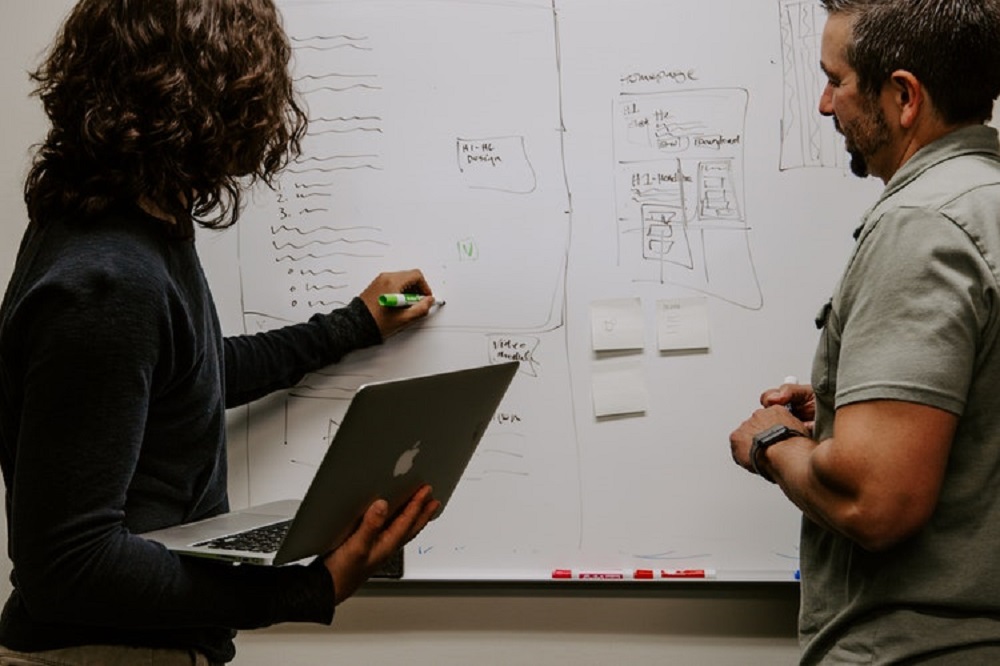
What can we improve on?
Designing is not an easy task, as you have probably figured out by now. There’s a very good chance that you won’t get what you want the first time around. For one thing, it’s not easy to explain to someone what you have visualized in your mind. That goes for both you and the designer. Just because they are the creative one, it doesn’t mean that they can verbally express an idea as succinctly as they can execute it visually.
Evaluate
Expect to make tweaks to the finished product before it’s really ready. This may be a few or several, depending on how clearly the two of you were able to define the project at the outset and how much you put into working through the milestones to completion.
This involves a lot of different little factors that can affect the process. Anything from your communication styles and level of knowledge about the different elements to time zone gaps and mind changing can affect the result.
Give More Feedback

The key is to keep giving feedback until the designer comes to a deep enough understanding of your brand to create the kind of graphics that can truly represent it. Remember that this is your brand, not theirs. You have undoubtedly spent a lot more time thinking about it and playing around with it since you first got the business bug than they have since starting to work on that first project.
Go through a few iterations to improve on any issues you uncovered while evaluating each milestone and deliverable. Then make a final evaluation once you’re satisfied with the result – or determine that you will never get there – and decide whether or not you want to continue working with this designer.
Final Thoughts
You may feel frustration somewhere along the way to the point where you are wondering if you even want to outsource graphic design at all moving forward. When that happens, just take a beat and think about what it would mean to hire someone in your area, and all the responsibility that would entail.
It’s not easy to outsource graphic design, but it’s a lot harder to either do it yourself or take on a full time person to produce what you need here and there.

